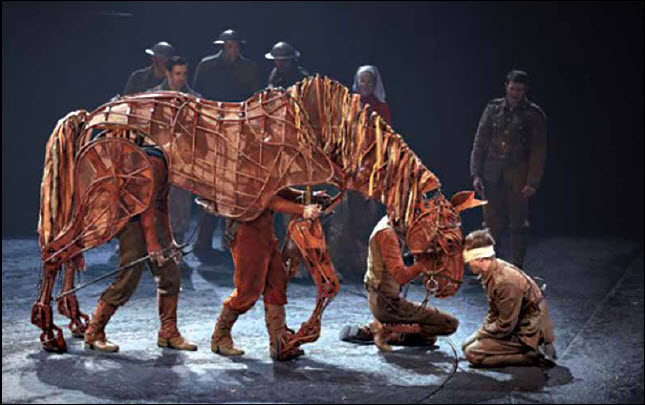 By: Ali Elizabeth Turner
By: Ali Elizabeth Turner
In the August 19th edition of Athens Now, Deb Kitchenmaster used her column space in “Horse Whispering” to write a wonderful article on a most remarkable piece of equine and human art in film form entitled, War Horse. What she did not know at the time was that War Horse was originally a children’s book, then a play that was wildly successful all over the world for a number of years and a number of reasons, not the least of which was the use of humans as part of the “puppetry” that created the presence of the horse Joey as he makes his way through WWI. The resulting life lessons that are possible to learn from a piece of fiction suggested by true events are virtually endless.
In the film version, Steven Spielberg used more than 300 live horses as well as CG special effects to craft the story of one of the most intense “horse-and-his-boy” tales ever. As anyone who has seen the film will attest, it is impossible to view it and not ask at least once, “How did they do that?” In the stage version, a company out of South Africa called Handspring Puppets made life-size frames of horses with people in them expressing remarkably accurate representations of the movement of horses with stunning grace and agility. And it begs the same question, “How in the world do they do that?”
The sheer bodily strength necessary to pull off something that looks so realistic while at the same time creating a physical visual experience that is somewhat surreal is startling. How do the “horses” do what they do with such skill? Or, perhaps put differently, how do humans inside of ingeniously designed frames move in such a way to accommodate the presence of another human on their backs and look like a horse?
I would like to hope that the cast members are all avid horse lovers from birth, but given the fact that this is a globally performed play, that is unlikely. What I do know is that the amount of work that it took to pull off such a performance is beyond me.
The answer to all of it, the “How did they do that?” that asserts itself in the film and the play, is the power of story, the power of creativity, and the determination that sometimes to get a point across one must do remarkable things. More importantly, it is the power of teamwork coupled with an unrelenting vision to push the envelope in order to make sure that history is not forgotten that cries out for a “performance” of principles that is born out of the more important question, “Why would they do it?”
We live in a time when there are those who would either rewrite history or subtly erode it until it is no longer recognizable. There is limited passion to defend the Constitution from all enemies, foreign and domestic, and some would be relieved if the vision of the founders of our country becomes so dim that it just fades away. But what if American humans are willing to become so uncomfortable, sweaty, sore, and out of their comfort zone that they “become horses” in order to tell a story that is worth telling, and preserve a dream that is more than worth dreaming? I say, we just might create a global phenomenon that gets the point across, and does it with captivating creativity.







